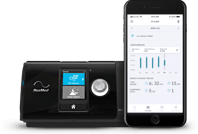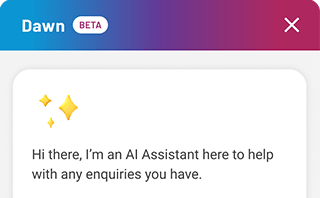If you think your CPAP therapy is less comfortable in winter compared with other times of the year, you may very well be right. It is more common at this time of the year for CPAP users to experience nasal congestion, a runny nose and dry mouth or throat.
Let’s learn why these side effects occur and what you can do to get through this tricky season.
Why is CPAP less comfortable in winter?
Why does humification cause rainout or condensation?
What else can I do to improve humidification?
When we breathe, our nose works to warm and moisturise the air, so by the time it enters our lungs, the air matches the warmth and moisture levels of our body.
For CPAP users, the increased airflow during therapy can overwhelm the body’s ability to humidify the air, leading to dryness in our airways. This is especially worse in winter when the air is cooler and dryer.
One of the easiest things you can do to improve your comfort in winter is to use a humidifier with your CPAP device.
Fortunately, most modern CPAP devices now come with a built-in heated humidifier, which works to keep the pressurized air moist. You just need to turn it up a notch higher in winter.
If your device does not have a humidifier, you can try adding a standalone humidifier in your bedroom to increase the ambient humidity in your home.
Most built-in humidifiers in CPAP devices contain a chamber that is filled with water. Underneath this chamber is a hot plate that heats the water and turns a portion of it into water vapour. This vapour is then mixed with the pressurised air that CPAP users breathe in.
Your humidification settings should allow you to control both the amount of water boiled off and the temperature of the air you breathe in.
When you use a heated humidifier, the temperature and humidity of the pressurised air will be higher within your mask and tubing than outside of it. As the warmed air flows from your device to your mask, it will cool down, leading to condensation and rainout.
A simple solution to prevent rainout is to use heated tubing, which will control the temperature of the air being delivered.
One of the most important things to remember when using a humidifier with your mask is to change the water every day and to clean it once at least a week. Doing both will ensure the air you breathe is clean and free of mould and bacteria.
Our last tip for using your CPAP humidifier is to avoid using tap water in your water chamber. Using distilled or bottled water will minimise the risk of mineral deposits forming and help extend the lifespan of your device.
Sleep isn’t one-size-fits-all, neither is the way you improve it. We provide you the very best tools to help you get there.

Resmed

Chat anytime with our AI-powered, digital assistant Dawn for instant CPAP support and sleep health insights. Think of Dawn as your personal guide in the digital library of sleep and ResMed information. Access 24/7 sleep support now.
Stay up to date with the latest products, news, offers and tips for Sleep Apnea, Snoring, Insomnia and overall good Sleep Health.
Post a comment